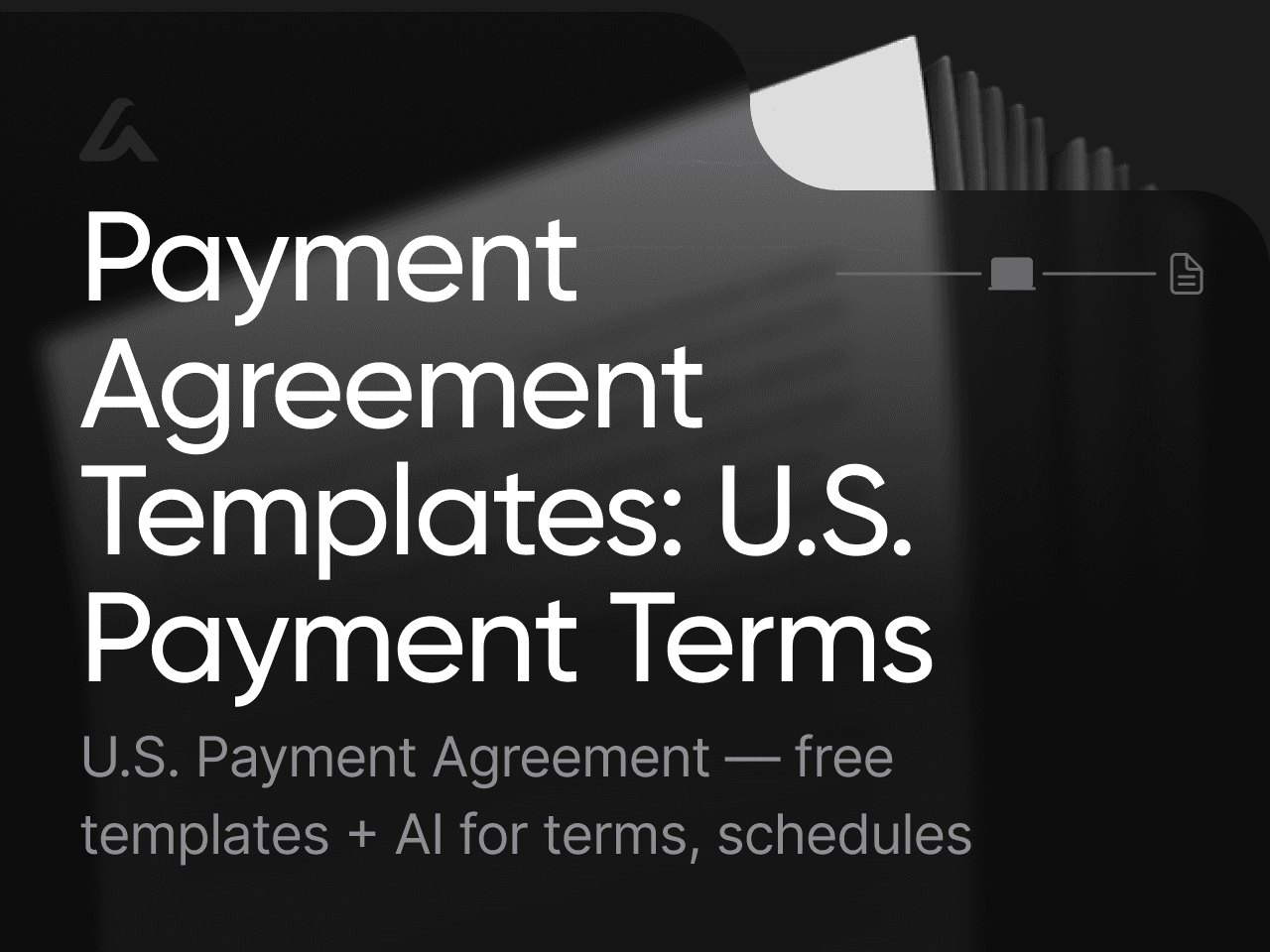AI Lawyer Blog
Supply Agreement Template (2025) Free to Download & Customize

Greg Mitchell | Legal consultant at AI Lawyer
3
In this post, you’ll learn what a supply agreement is, why it matters in 2025, when to use it, and how to get started with a free, ready-to-use template.
For a more comprehensive understanding of Supply Agreements — including their legal nuances, variations across jurisdictions, and practical applications — we invite you to explore our in-depth overview article dedicated to this document category.
You Might Also Like:
What Is a Free Supply Agreement Template?
A Supply Agreement Template is a standardized legal document that outlines the terms between a supplier and a buyer. It covers key details like product specifications, pricing, delivery timelines, and quality standards, helping ensure both parties are aligned and legally protected throughout the transaction.
Why You Need a Supply Agreement in 2025
In 2025, global supply chains are more interconnected and more unpredictable than ever. A Supply Agreement helps you maintain control, avoid disputes, and secure long-term business relationships, especially in times of uncertainty.
Real-World Example
During the COVID-19 pandemic, many companies without formal agreements faced unfulfilled orders, raw material shortages, and legal disputes. According to the Harvard Business Review, businesses with strong contracts in place were better able to enforce delivery terms and maintain supplier accountability.
Key stats show
A recent study found that 93% of businesses faced supply chain disruptions, but those with diverse suppliers saw 30% fewer delays, and digital tools improved forecasting by 35% proving the need for flexible, well-structured supply agreements.
Key Advantages in 2025
Pricing Protection: Lock in rates and avoid unexpected price hikes from suppliers.
Risk Mitigation: Reduce liability in case of delivery delays, non-performance, or product defects.
Legal Clarity: Supply agreements are enforceable under the Uniform Commercial Code (UCC) in the U.S., and CISG for international contracts helping you resolve conflicts efficiently.
Audit Readiness: Well-structured agreements are often required during investor due diligence or financial audits.
Stronger Relationships: Clear terms promote trust, transparency, and repeat business with reliable suppliers.
As inflation, market volatility, and geopolitical events continue to affect supply chains, having a formal Supply agreement isn’t optional it’s essential.
Who Should Use a Supply Agreement?
Manufacturers – For securing raw materials and components.
Retailers – To formalize terms with suppliers.
Freelancers – When outsourcing work or sourcing materials.
Distributors – To manage product procurement and delivery.
E-commerce Businesses – To ensure product availability.
Healthcare Providers – For medical supplies and equipment.
Government & Large Enterprises – In complex, multi-tiered supply chains
When Should You Use a Supply Agreement?
You should consider using a supply agreement in the following scenarios:
Ongoing business relationships: When you regularly source products from the same supplier.
High-value transactions: For large bulk orders or custom materials.
International shipments: Where delivery terms, duties, and timelines are critical.
A supply agreement ensures that every party is on the same page every time.
Legal Importance and Context
A Supply Agreement is a critical legal tool that establishes clear terms between a buyer and a supplier, ensuring both parties understand their rights and obligations. This legally binding contract helps prevent costly disputes and can be enforced in court if necessary.
In the U.S., supply agreements are typically governed by the Uniform Commercial Code (UCC), which provides a standardized framework for the sale of goods. For international agreements, Incoterms and the United Nations Convention on Contracts for the International Sale of Goods (CISG) offer additional rules to define delivery, risk, and other key aspects of cross-border transactions.
Having a formal supply agreement in place isn’t just about legal protection it’s about fostering trust and clarity in your business relationships.
What to Include in Your Supply Agreement: A Breakdown of Key Sections
To make the most of your agreement, here are the essential sections:
Parties Involved: Names and addresses of the supplier and buyer.
Products Supplied: Specific items being provided, often in a schedule or appendix.
Purchase Orders: Outline how orders will be placed and confirmed.
Pricing and Payment Terms: Payment methods, due dates, and accepted currencies.
Delivery Terms: Shipping responsibilities, Incoterms (e.g., FOB, CIF), and risk transfer.
Inspection and Quality: Rights to inspect and reject non-conforming goods.
Warranties: Product guarantee period and conditions.
Termination Clause: Conditions for ending the agreement early.
Dispute Resolution: Governing law and preferred method of conflict resolution
Practical Tips for Using a Master Supply Agreement Template Effectively
Save digital and signed versions for both parties.
Review all product specs and delivery terms carefully before signing.
Maintain open communication with your supplier for smoother execution.
⚖️ Legal Tip: Navigating Force Majeure Clauses in Supply Agreements
With global supply chains vulnerable to disruptions from pandemics, geopolitical conflicts, and natural disasters, incorporating a clear force majeure clause has become crucial. This clause outlines the conditions under which either party can delay or cancel obligations due to events beyond their control.
According to the American Bar Association, a robust force majeure clause should:
Clearly define triggering events (e.g., natural disasters, pandemics, wars).
Specify notification procedures and timelines for invoking the clause.
Determine the rights and obligations of each party during and after the disruption.
Including a comprehensive force majeure clause reduces legal uncertainty and helps maintain healthy supplier-buyer relationships during unforeseen disruptions.
📌 Real-World Example: Toyota’s Strategic Supply Agreements
Toyota, recognized for pioneering the Just-in-Time (JIT) inventory model, heavily relies on clearly defined supply agreements. However, after facing significant disruptions from natural disasters like the 2011 tsunami in Japan, Toyota revised its contracts to include stricter contingency clauses and diversified sourcing.
According to a report by McKinsey, businesses that revised their supply agreements post-disruption saw up to 50% fewer operational interruptions. Toyota’s experience illustrates the importance of regularly updating your supply agreements to reflect changing risk scenarios.
How AI Lawyer Creates Your Document (Step-by-Step)
At AI Lawyer, we believe that drafting legal documents shouldn’t feel like decoding a foreign language. Whether you’re a business owner, landlord, freelancer, or someone navigating a personal matter — you should be able to create a legally sound document without needing a law degree.
That’s why we built a document experience that works like a conversation, not a form. Here’s exactly how it works:
1. You Tell AI Lawyer What You Need
It starts with a simple question:
“What type of document do you want to create?”
You choose from our list of professional templates — whether it’s a rental agreement, contractor form, invoice, publishing contract, or anything else — and AI Lawyer immediately pulls up the structure designed specifically for that use case.
Behind the scenes, the system references U.S. legal standards and best practices to make sure you’re starting from the right foundation.
2. We Highlight the Key Sections
Instead of throwing the whole document at you, AI Lawyer breaks it down.
Each key component — like payment terms, deadlines, responsibilities, clauses — is briefly explained in human language so you know what it means before you fill it out.
It’s like having a lawyer on your shoulder saying,
“Here’s what this section covers, and why it matters.”
3. You Answer Simple, Targeted Questions
AI Lawyer asks you step-by-step questions — like:
Who’s involved?
What are the key dates or timelines?
What are the terms (payments, conditions, obligations)?
Do you need special clauses like confidentiality, termination, or jurisdiction?
Each question is directly linked to a block in the final document — so your answers go exactly where they belong.
4. The Document Builds Itself As You Go
On the right side of your screen, the full document builds in real time.
Every time you answer a question, a corresponding section is added — with legally sound wording, smart defaults, and editable fields.
You’re not just answering a form — you’re watching your document take shape.
This phased process helps:
Reduce overwhelm
Catch errors early
Ensure nothing is forgotten
5. You Edit and Customize Freely
Once all the inputs are in, the full document is unlocked for editing.
You can:
Rewrite any clause
Change formatting
Add or remove sections
Rephrase terms in plain English (or more formal legal tone)
The editor works like a Google Doc — intuitive, responsive, and flexible.
6. Your Final Document Is Yours to Keep
Download in PDF, DOCX, or copy to clipboard.
You can print it, email it, or send it for signature — and revisit your answers anytime to generate updated versions.
Why This Workflow Matters
Most template tools give you a blank form.
We give you a process — one that mirrors how a real attorney would walk you through the creation of a document:
Context → Input → Assembly → Review → Delivery
It’s not magic. It’s just a smarter way to get legal work done — without getting lost in the jargon.
FAQs
Q: Do I need a lawyer to draft a supply agreement?
A: Not always. For straightforward, domestic transactions, you can use a template or AI-powered document generator to create a solid agreement. However, for complex arrangements — such as high-value contracts, long-term supply commitments, or international deals — consulting a lawyer ensures compliance with applicable laws and reduces risk.
Q: Can I use the same supply agreement template for multiple suppliers?
A: Yes, but each agreement should be customized to reflect the unique terms you negotiate with each supplier. This includes adjusting delivery schedules, product specifications, pricing, payment terms, and any applicable local or international trade rules.
Q: What happens if a supplier fails to honor the agreement?
A: Your recourse depends on the contract terms and applicable law. Most agreements allow for remedies such as withholding payment, seeking damages, terminating the agreement, or pursuing legal action. A clearly written contract gives you stronger legal standing in disputes.
Q: Why is a force majeure clause important in a supply agreement?
A: It protects both parties when unforeseen events — like pandemics, natural disasters, or political instability — make performance impossible or impractical. A well-defined clause can prevent disputes and outline clear procedures for handling disruptions.
Q: Are supply agreements enforceable internationally?
A: Yes, but you must ensure your agreement complies with international trade frameworks like the United Nations Convention on Contracts for the International Sale of Goods (CISG) and uses clear Incoterms to define delivery and risk responsibilities.
Q: Is a supply agreement necessary for small or occasional purchases?
A: While smaller transactions may seem low-risk, even short-term arrangements can benefit from written agreements — especially if you rely on the product for critical operations or expect repeat orders.
Final Thoughts
A clear supply agreement can mean the difference between smooth operations and costly setbacks. It sets expectations, defines responsibilities, and helps both parties avoid confusion or conflict.
Either you’re managing regular shipments or starting a new vendor relationship, using a structured, customizable template saves time and keeps your business legally protected.
Download the free template or generate a custom version either way, you’re setting your supply process up for success.
Sources and References
Legal frameworks discussed in this guide draw on the Uniform Commercial Code (UCC) Article 2 on sales, the United Nations Convention on Contracts for the International Sale of Goods (CISG), and the ICC’s Incoterms® rules, which together provide core standards for domestic and cross-border supply contracts and delivery terms.
Insights on pandemic-era disruptions, contract enforcement, and supply-chain resilience are informed by Harvard Business Review’s analysis of global supply chains in a post-pandemic world, McKinsey research on future-proofing supply chains and strategic resilience lessons from the auto industry, and empirical data from the BCI Supply Chain Resilience Report.
Guidance on force majeure and contractual risk allocation references the American Bar Association’s overview of force majeure clauses in the COVID-19 era and related scholarship on exercising force majeure in procurement and supply agreements.
You Might Also Like:



